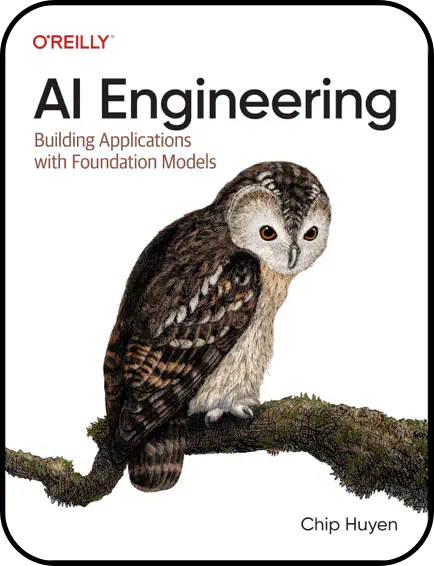
Book Review: AI Engineering
In Brief
- Title: AI Engineering – Building Applications with Foundation Models
- Author: Chip Huyen
- Publisher: O’Reilly
- Publication Date: December 2024
- Language: English
- Pages: 509
- ISBN: 978-1-098-16630-4
Introduction
Artificial Intelligence (AI) is currently the number one topic when it comes to current technological developments. Many people have tried various AI services like ChatGPT or Claude in recent months. But how does AI actually work? And how can I use this technology for my specific use case?
In her book “AI Engineering – Building Applications with Foundation Models,” Chip Huyen answers these questions.
The Fundamentals
Huyen begins with an introduction to the topic and explains many of the terms. She also provides an overview of AI application areas.
Then it goes deeper into how foundation models work. Foundation models form the basis for many AI applications. Unlike earlier models, they can be used for many different use cases.
To understand the architecture of foundation models, some prior knowledge in machine learning is certainly helpful. Huyen explains the building blocks of modern models and the parameters by which the models differ.
Model Evaluation
The second part of the book deals with how developers can evaluate different models. The author introduces metrics and explains how AI can also be used for evaluation.
After a theoretical chapter, the book also provides a practical introduction to what automated evaluation can look like. The goal is to be able to select a model based on objective criteria and also compare new models with the current model.
AI Implementation
The following chapters revolve around the topic of configuration and implementation of custom models.
The least effort-intensive way to influence a model’s output is described in the “Prompt Engineering” chapter. Here, the model itself remains unchanged, but behaviors can be modified or improved through targeted use of prompts.
Huyen also explains how additional information can be made available to the model through Retrieval Augmented Generation (RAG), without the model needing to already know this information. As agents, the models can also be made to independently execute certain functions for the user.
More effort to improve a model is so-called fine-tuning. Here, an existing model is used and then trained with training data for a specific use case. However, this is also associated with higher costs (training costs money) and requires knowledge about creating training data. The author dedicates a separate chapter to the latter.
Finally, the book also contains tips on what to consider when hosting your own models.
The Big Picture
In the last chapter, Huyen explains using an example how the architecture of an AI system could look. She uses the components explained in the preceding chapters to create an architecture step by step.
The book concludes with guidance on how user feedback can be collected in AI systems and how this can be used to improve the application.
Summary
For anyone who doesn’t just want to use AI APIs but also wants to understand what happens in the background, I can warmly recommend this book.
Huyen succeeds in making even complex topics understandable through many examples and graphics. However, to understand all information down to the last detail, technical prior knowledge is useful.
Even though I won’t be implementing many topics (fine-tuning, self-hosting of models) in the near future, this book has enormously helped me better understand the world of AI.
This review has been translated from German to English using Claude 4 Sonnet.


